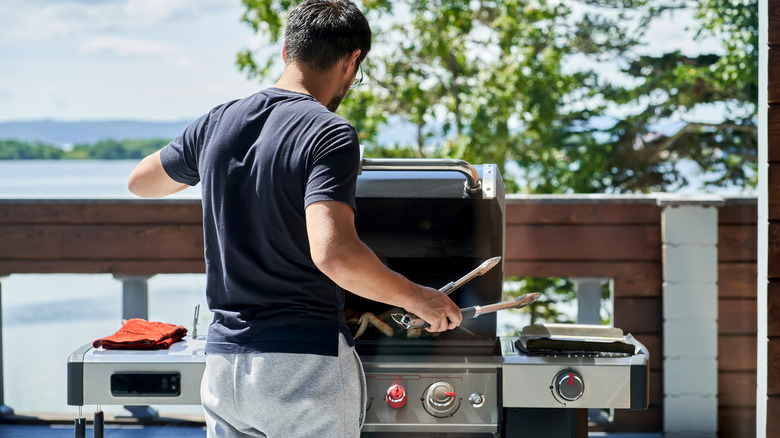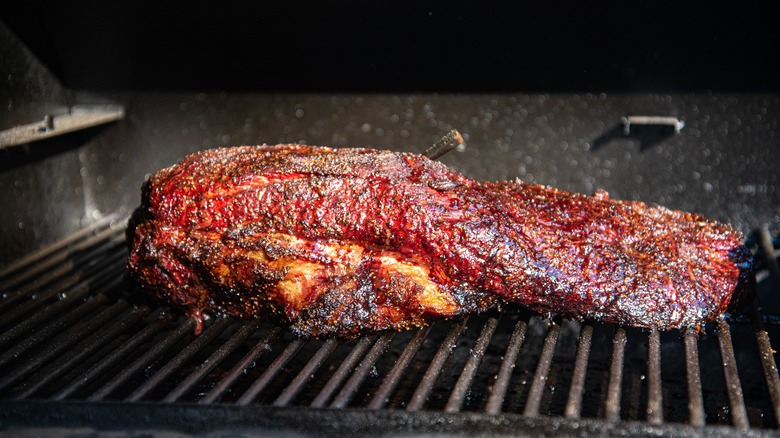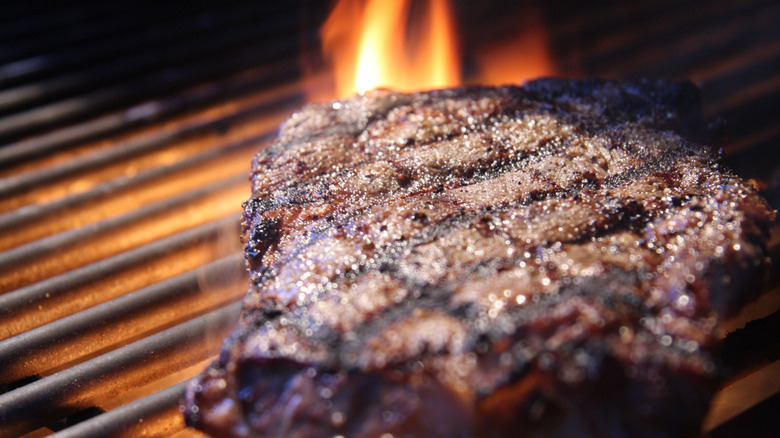The Type Of Food You Should Never Grill With Direct Heat
It's no secret that some foods just taste better when they're cooked on the grill — especially when you've been doing it for long enough to have picked up your own hacks along the way. You might know what's the absolute best type of onion for grilling, for example (sweet ones, though red onions work, too). But do you know how about the do's and don'ts of positioning your food over direct heat or off to the side in a more sort of ambient heat?
That's incredibly important, and there is one easy-to-remember rule about what kinds of food you should never leave on the grill over direct heat. We're talking about thick cuts of meat: Think whole chickens, hefty steaks, and thick pieces of pork. Here's a handy rule of thumb: If you're expecting it to be on the grill for more than 20 minutes, it shouldn't be over direct heat.
In some cases, it's recommended to use a combination of both, but the key here is to remember that grilling successfully is a hands-on process. With that in mind, let's take a look at why direct heat and thick meats don't work, and how you can still cook these tricky foods for maximum flavor.
Here's why thick cuts of meat shouldn't sit over direct heat
One of the most important rules of food safety is making sure everything gets cooked to the proper temperature, and that definitely extends to the grill. Poultry, for example, needs to hit an internal temperature of 165 Fahrenheit, burgers and pork need to get to 160 Fahrenheit, and other types — including steaks — are considered medium rare at 145 Fahrenheit. That's crucial, and here's where the problem comes in if you try to cook thick cuts of meat over direct heat.
The thicker the meat, the longer it's going to take to come to temp — and there's a good chance that the outside is going to burn first, even as that high heat causes major moisture loss. A burnt exterior and a dry interior isn't what anyone is expecting from a delicious meal hot off the grill, but it doesn't take much: If a steak is more than an inch thick, it's too thick for direct heat.
In some cases, there's a work-around that you might be able to consider. Let's say you're grilling up some chicken breasts. Don't put them on that direct heat in their natural, thick shape, which will pretty much guarantee uneven cooking. Instead, use a meat tenderizer to pound them into even, flat pieces, and then grill. Problem solved!
Fortunately, there's a few options for cooking thick meats in the great outdoors
So, you've got an incredible, thick piece of steak that you're looking forward to grilling, but you know that you should cook thick steak with low heat. You can definitely use the grill, but the trick is to get your grill hot, sear both sides over direct heat, then finish them over indirect heat.
Fortunately, this is easy to do. Most gas grills have adjustable burners that allow you to control the heat, so you can leave some burners off. Using a charcoal grill will take just a little more planning, but it's pretty straightforward: Place your fuel briquettes off to one side to create direct and indirect heat zones. Finally, keep this backup plan in mind: If the outside of your meat is looking too well-done while the inside still hasn't reached your desired temperature, you can also opt for finishing it in the oven.
Low and slow is key for thicker cuts of meat, and let's say you're planning on grilling a beef brisket. You can, but you should also keep in mind that because you'll be cooking this over indirect heat, you'll need to plan your time accordingly. Meats that you're cooking slowly and over indirect heat can take hours, depending on the weight, and if you've got plans for grilling a variety of foods, this is one that you'll need to cook first. The good news? It's worth the wait.


